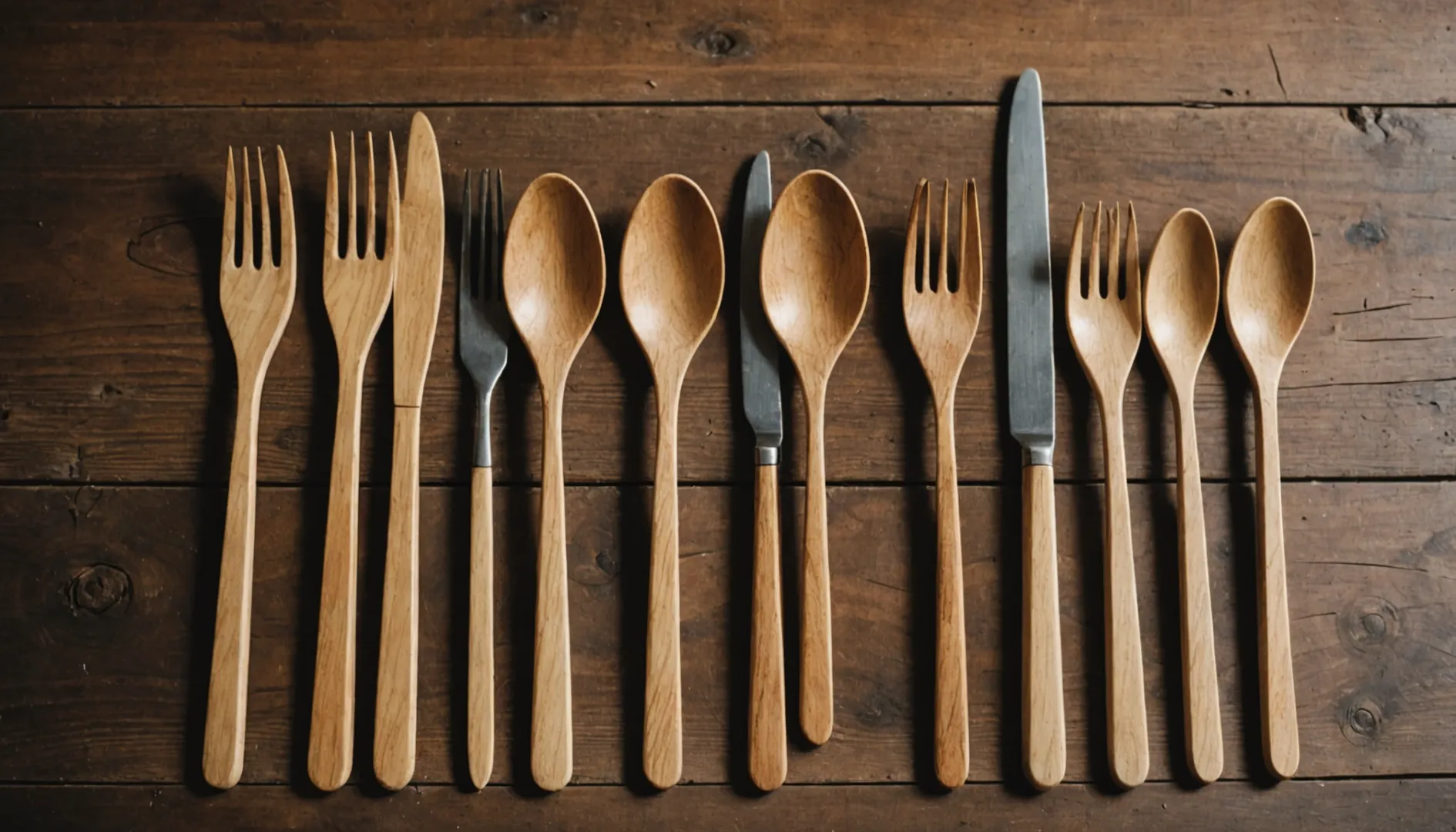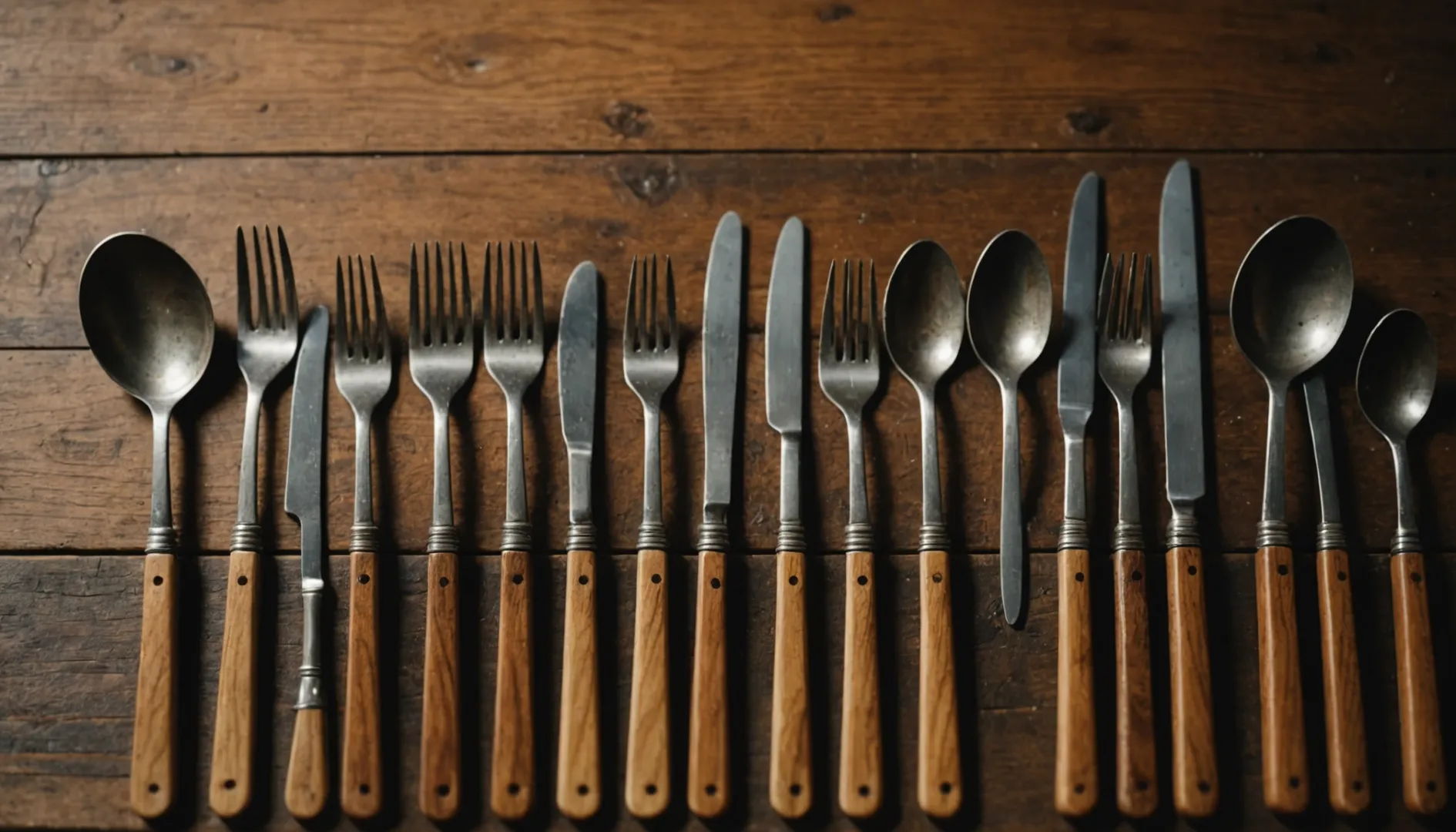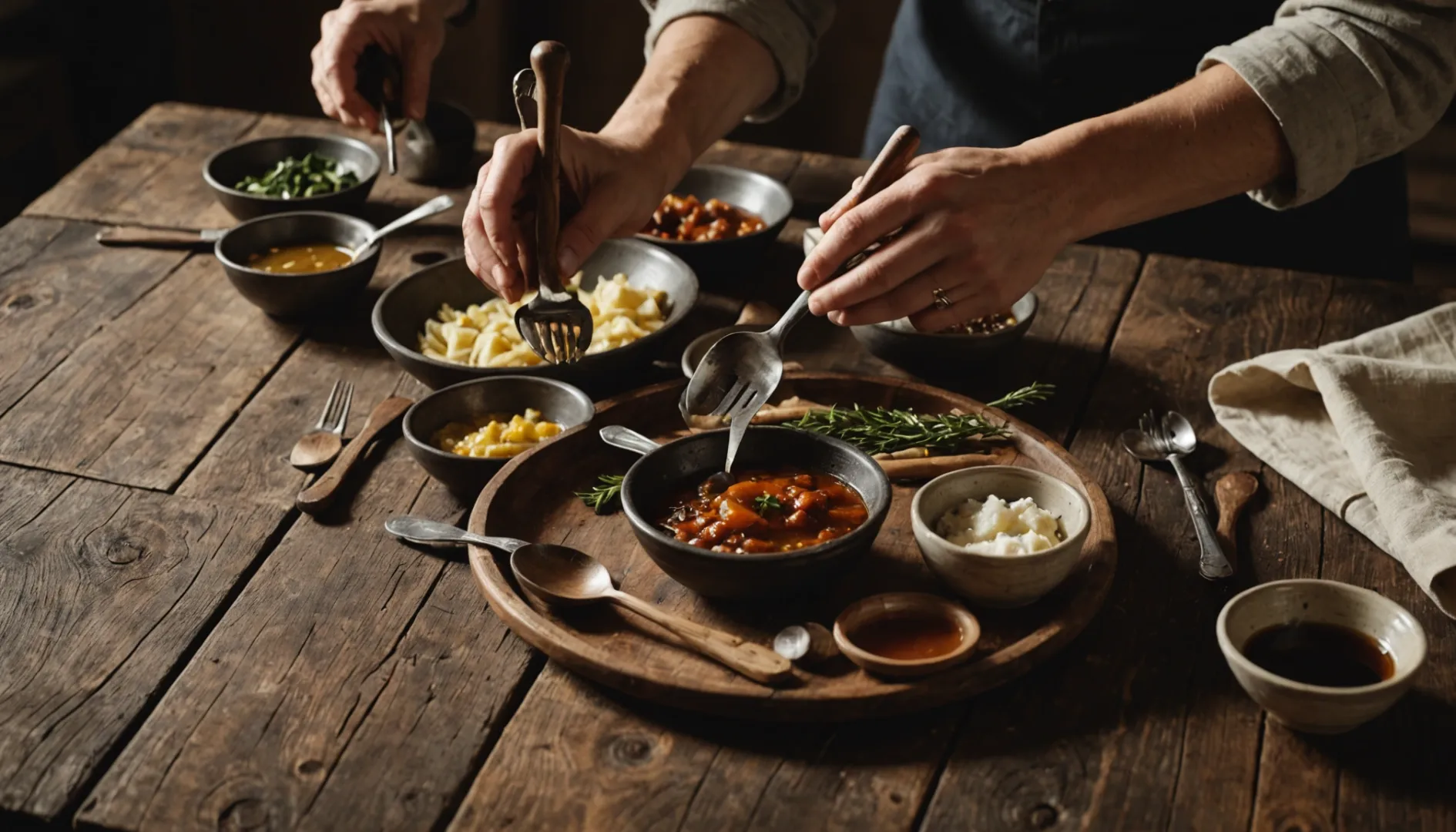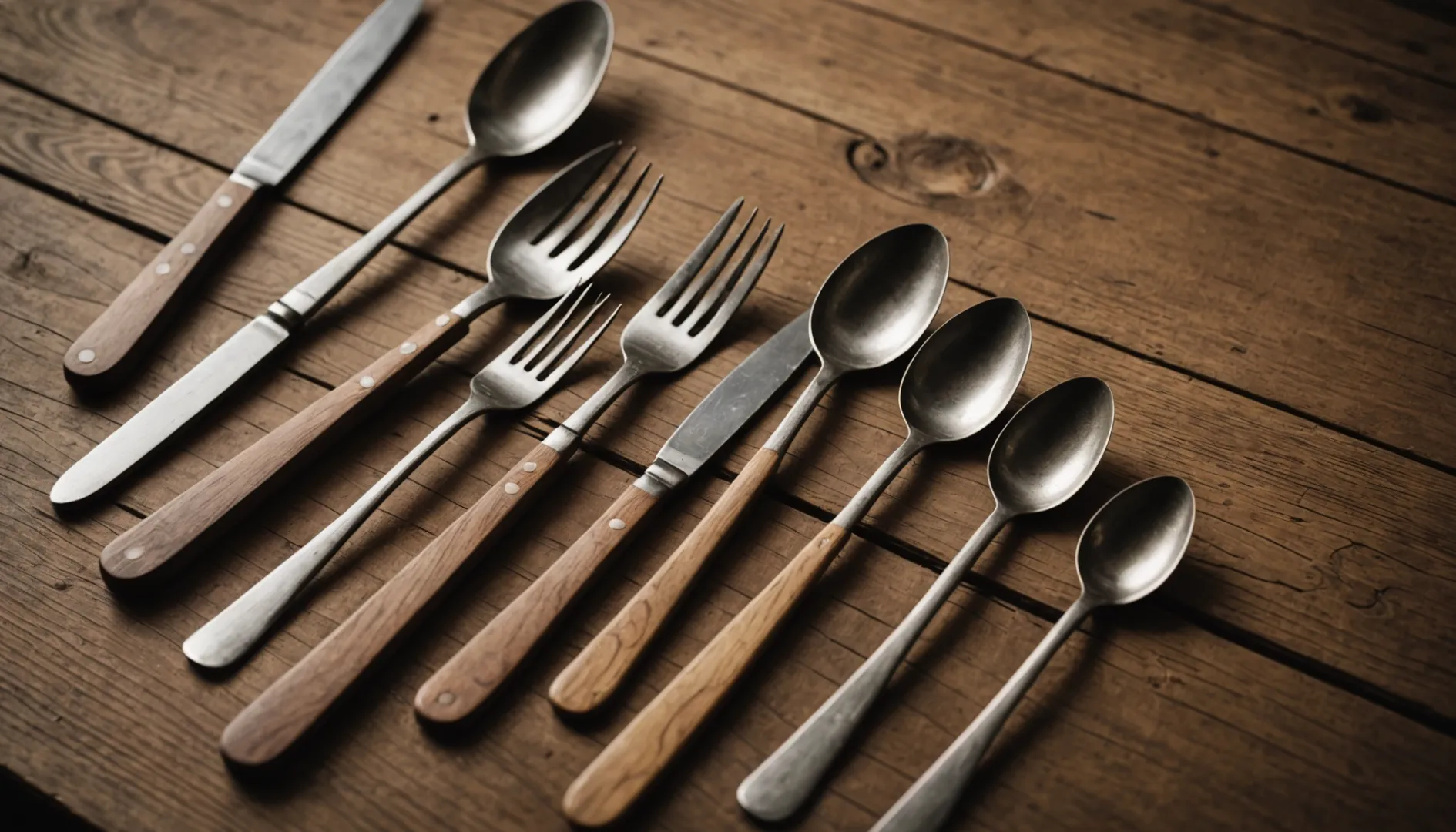
If you’re anything like me, you care deeply about making choices that benefit our planet. When it comes to sourcing OEM disposable wooden cutlery, finding the right suppliers is crucial for your eco-conscious business.
You can buy OEM disposable wooden cutlery from specialized manufacturers and suppliers who offer bulk purchasing options. Look for companies with eco-certifications and a focus on sustainable sourcing to ensure quality and environmental responsibility.
But knowing where to buy is just the tip of the iceberg. What should you really look for in terms of certifications, materials, and maintenance? Let’s explore the ins and outs of wooden cutlery to empower you to make informed decisions that positively impact both your business and the environment.
Wooden cutlery is more eco-friendly than plastic.True
Wooden cutlery is biodegradable and sourced from renewable resources, unlike plastic.
What Factors Should You Consider When Buying Wooden Cutlery?
Choosing the right wooden cutlery involves more than just aesthetics; it requires careful consideration of several key factors.
When buying wooden cutlery, consider material quality, eco-certifications, maintenance needs, and intended usage. Ensure the wood is sustainably sourced, the utensils are well-finished to prevent bacterial growth, and that proper care guidelines are followed for longevity.

Material Quality and Sourcing
The first factor to consider is the type of wood used in the cutlery. Hardwoods like maple and oak offer superior durability and a refined finish, making them suitable for premium markets. Conversely, softer woods such as linden are lighter and more economical, appealing to budget-conscious consumers. It's essential to strike a balance between durability and cost to meet your specific needs.
Moreover, sustainable sourcing is crucial. Look for cutlery that is FSC-certified1, indicating responsible forest management and legal harvesting practices.
Eco-Certifications and Safety
Eco-certifications not only assure environmental sustainability but also verify safety standards. Certifications such as FDA or LFGB ensure that the cutlery is safe for food contact. These certifications confirm that no harmful chemicals are used during manufacturing. Checking for these labels can significantly influence your decision.
Maintenance and Longevity
Wooden cutlery requires specific maintenance to ensure longevity. Unlike their plastic counterparts, wooden utensils can absorb moisture and harbor bacteria if not cared for properly. Manufacturers often apply natural coatings like beeswax or plant oils to protect against moisture absorption. However, these finishes can wear off over time, necessitating reconditioning.
Proper cleaning techniques are vital; hand washing with mild soap and immediate drying is recommended to prevent warping or cracking. Avoid exposing the cutlery to high temperatures or prolonged soaking in water.
Intended Use and Design
Consider what you will be using the wooden cutlery for. If it's for regular home use, durability and ease of maintenance might be your priorities. For a one-time event or a business setting, aesthetic appeal might take precedence. Some manufacturers offer cutlery with minimalist designs that reduce material usage without compromising strength, aligning with eco-friendly practices.
Furthermore, innovations such as compostable coatings can enhance biodegradability, offering an eco-friendly disposal option.
Cost vs. Value
While high-quality wooden cutlery may come with a higher upfront cost, its value lies in its sustainability and potential longevity with proper care. Consumers increasingly value eco-friendly products, making it worthwhile to invest in quality materials that support environmental goals.
In summary, when selecting wooden cutlery, ensure that you weigh the quality of materials, eco-certifications, maintenance requirements, intended usage, and cost considerations. Making informed choices not only supports a sustainable lifestyle but also guarantees satisfaction with your purchase.
FSC certification ensures sustainable wood sourcing.True
FSC certification confirms responsible forest management practices.
Hardwoods like maple are less durable than linden.False
Hardwoods like maple are more durable compared to softer woods like linden.
How Do Eco-Certifications Impact Your Purchase Decision?
Eco-certifications provide assurance that products meet environmental standards, influencing consumer choices significantly.
Eco-certifications impact your purchase decisions by guaranteeing that products are environmentally friendly, ethically sourced, and meet specific sustainability standards. These certifications serve as a trusted seal of approval, helping you make informed choices that align with your values and support sustainable practices.

Understanding Eco-Certifications
Eco-certifications act as a bridge between consumers and sustainable products, offering transparency and trust. When you see labels like FSC certification2 on wooden cutlery, it indicates that the wood was harvested responsibly and supports forest conservation efforts. This assurance is crucial as it not only preserves natural resources but also aligns with global sustainability goals.
Types of Eco-Certifications
There are various eco-certifications you might encounter when purchasing products:
- Forest Stewardship Council (FSC): Ensures that products come from responsibly managed forests.
- LEED Certification: While more common in construction, some product manufacturers use similar sustainability benchmarks.
- Energy Star: Focuses on energy efficiency, which could be relevant if wooden cutlery is processed using sustainable methods.
These certifications provide different assurances, from ethical sourcing to reduced environmental impact.
Influence on Consumer Behavior
Eco-certifications heavily influence consumer behavior by providing peace of mind. A certified product often means fewer chemicals, sustainable production, and better safety standards. Consumers today are more likely to trust brands that showcase their eco-credentials, especially when such claims are backed by recognized certifications.
Consider this table highlighting consumer priorities when purchasing eco-certified products:
| Priority | Description |
|---|---|
| Environmental Impact | Importance of reducing carbon footprint |
| Health Safety | Ensuring non-toxic, safe-to-use products |
| Ethical Sourcing | Supporting fair trade and responsible sourcing |
Economic Implications
Products with eco-certifications often carry a premium price tag due to the rigorous standards they must meet. However, many consumers are willing to pay more for such products, viewing it as an investment in the environment and personal health. This economic dynamic encourages more manufacturers to adopt sustainable practices.
The Role of Transparency
Transparency is becoming increasingly important. Eco-conscious consumers want to know the story behind their purchases. Companies can leverage technologies like blockchain to offer detailed insights into the supply chain, enhancing trust. By understanding where and how a product is made, consumers feel more connected to their purchase decisions.
Ultimately, eco-certifications serve as a powerful tool in guiding consumer choices towards sustainability, enabling informed decisions that align with personal and global environmental goals.
Eco-certifications guarantee ethical sourcing.True
Eco-certifications ensure products are sourced responsibly, supporting sustainability.
All eco-certified products are non-toxic.False
Not all eco-certifications focus on toxicity; some emphasize sourcing and impact.
Why Is Proper Maintenance Essential for Wooden Cutlery?
Wooden cutlery is a sustainable choice but requires specific care to ensure longevity and hygiene.
Proper maintenance of wooden cutlery involves regular cleaning, oiling, and careful storage to prevent moisture damage and bacterial growth. This ensures the utensils remain durable, safe, and environmentally friendly over time.

The Unique Challenges of Wooden Cutlery
Wooden cutlery, while eco-friendly, is prone to absorbing moisture due to its porous nature. This makes it susceptible to bacterial growth if not maintained properly. Manufacturers often coat these utensils with natural substances like beeswax or plant oils to protect against moisture. However, over time, these coatings can wear off, requiring reapplication to maintain their protective barrier.
Cleaning and Drying: A Non-Negotiable Routine
To extend the life of your wooden cutlery, it's imperative to wash them by hand using mild soap and warm water. Avoid soaking them, as prolonged exposure can lead to swelling or cracking. After washing, ensure they are thoroughly dried before storing to prevent moisture buildup. This simple routine helps in maintaining the integrity and hygiene of the utensils.
Regular Oiling for Longevity
Reapplying natural oils is crucial to keep your wooden cutlery in top condition. This process not only revives the finish but also provides a renewed layer of protection against moisture and bacteria. Oiling should be done regularly, depending on usage frequency, to prevent drying out and cracking.
Avoiding Heat and Harsh Conditions
Exposure to high temperatures can dry out wooden cutlery, weakening its structure. Therefore, it's advisable to keep them away from dishwashers and direct heat sources. Proper storage in a cool, dry place ensures that the wood remains robust and less susceptible to damage.
Environmental Benefits Through Maintenance
Maintaining wooden cutlery doesn't just enhance its lifespan; it also aligns with sustainable practices. High-quality wooden utensils can last for years, reducing the need for frequent replacements and minimizing waste. By following these maintenance guidelines, consumers can enjoy both durability and eco-friendliness in their everyday dining tools.
For more insights on wooden cutlery care3, you may explore expert advice available online.
Wooden cutlery should be washed in dishwashers.False
Dishwashers can damage wooden cutlery due to high heat and moisture.
Regular oiling protects wooden cutlery from bacteria.True
Oiling creates a barrier that helps prevent moisture and bacterial growth.
Which Are the Leading Manufacturers of OEM Wooden Cutlery?
Curious about who leads the market in producing eco-friendly wooden cutlery?
The leading manufacturers of OEM wooden cutlery include companies like Bambu, EcoGecko, and Huhtamaki, known for their sustainable practices, eco-certifications, and innovative product designs.

Overview of Leading Manufacturers
In the realm of OEM wooden cutlery, several key players have emerged as industry leaders. These manufacturers not only focus on creating high-quality products but also emphasize sustainability and responsible sourcing.
-
Bambu: Known for its commitment to sustainability, Bambu produces a wide range of eco-friendly cutlery made from organically sourced bamboo. The company emphasizes the use of biodegradable materials and has gained a reputation for innovative design.
-
EcoGecko: This brand is recognized for its disposable wooden cutlery that aligns with environmental standards. EcoGecko uses sustainably harvested wood and focuses on minimal waste production, making it a preferred choice for many businesses.
-
Huhtamaki: A global leader in sustainable packaging solutions, Huhtamaki offers wooden cutlery options that are both functional and environmentally conscious. Their products often come with certifications like FSC, ensuring responsible sourcing and manufacturing.
Key Considerations in Choosing a Manufacturer
When selecting a manufacturer for OEM wooden cutlery, consider several factors:
-
Eco-Certifications: Look for certifications such as FSC or PEFC, which ensure the wood is sourced sustainably. Certifications4 not only verify the quality but also enhance brand credibility.
-
Material Quality: The type of wood used significantly impacts both the aesthetic appeal and durability of the cutlery. Hardwoods are preferred for high-end markets due to their strength and finish.
-
Innovative Design: Manufacturers that invest in innovative designs5 often provide more ergonomic and aesthetically pleasing products, catering to diverse consumer preferences.
-
Sustainability Practices: Companies employing sustainable practices, such as reducing carbon footprints and waste, align well with eco-conscious brands.
Notable Trends in Wooden Cutlery Manufacturing
The industry is witnessing several trends that shape consumer choices:
- Minimalist Designs: Using less material without compromising on durability helps in reducing environmental impact.
- Compostable Coatings: Enhancing biodegradability through coatings that break down quickly after disposal.
- Integration with Other Materials: Some manufacturers experiment with materials like bamboo fiber for added strength while maintaining eco-friendliness.
Market Dynamics and Consumer Preferences
The demand for sustainable cutlery is on the rise, with Europe and North America leading this trend. Consumers increasingly favor brands that demonstrate transparency in sourcing and manufacturing processes. Leveraging supply chain transparency6 technologies like blockchain can significantly boost consumer trust and brand reputation.
By choosing a reputable manufacturer that aligns with these values, businesses not only contribute positively to environmental conservation but also strengthen their market position.
Bambu uses biodegradable materials for cutlery.True
Bambu is known for using biodegradable materials in its products.
Huhtamaki lacks eco-certifications for sourcing.False
Huhtamaki's products often have certifications like FSC.
Conclusion
Choosing OEM disposable wooden cutlery means supporting sustainability while meeting your business needs. By selecting wisely, you're not only enhancing your brand's eco-credentials but also contributing to a healthier planet.
-
Learn about FSC certification ensuring responsible wood sourcing.: Certification. FSC certification ensures that products come from responsibly managed forests that provide environmental, social and economic benefits. ↩
-
Learn how FSC ensures responsible forest management.: More specifically, the FSC audits and certifies forests around the globe to ensure they meet both social and environmental sustainability standards. Through ... ↩
-
Learn expert techniques for maintaining wooden cutlery efficiently.: Hand-wash wooden utensils with hot water and mild dish soap. · Blot freshly washed wooden utensils with a clean dishtowel, then allow them to air ... ↩
-
Understand FSC's role in ensuring sustainable wood sourcing.: FSC certification can apply to a range of solid and composite wood and panel products including: rough wood, sawn wood, charcoal, sawdust, veneers, plywood, ... ↩
-
Discover how designs enhance functionality and appeal.: Wooden Ladle, Hand Carved Wooden Spoons, Wooden Cutlery, Primitive Design, Wood Joints ... Wood Serving Trays, featuring a variety of unique artisan designs. ↩
-
Learn how blockchain verifies ethical sourcing.: Blockchain can greatly improve supply chains by enabling faster and more cost-efficient delivery of products, enhancing products' traceability, improving ... ↩

